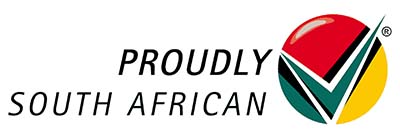In the realm of asset management, the journey is never complete without a thorough audit.
It’s not just about ticking boxes; it’s about ensuring every aspect of our client’s assets is in tip-top shape.
However, audits aren’t just about identifying successes; they also uncover areas for improvement. That’s where the real challenge lies – addressing those findings swiftly.
At Synergy Evolution, we understand the importance of swift resolution, not just for compliance but for the overall health of our client’s portfolios, especially here in South Africa where the market demands agility and adaptability.
Understanding Audit Findings
Asset management audits are vital for organizations to ensure their assets are managed efficiently, securely, and in compliance with regulations.
By understanding the findings of these audits, you can identify areas for improvement and optimize your asset management practices.
Here’s a breakdown of what to consider when examining asset management audit findings:
- Asset Inventory Accuracy: Does the organization have a complete and accurate record of all its assets, including physical verification?
- Asset Valuation: Are assets valued correctly on the financial statements, considering depreciation and current market value?
- Maintenance Practices: Are there proper procedures for preventive and corrective maintenance to ensure asset longevity?
- Internal Controls: Are there adequate controls to safeguard assets from loss, theft, or misuse?
- Risk Management: Are there processes to identify and mitigate risks associated with asset failure or downtime?
- Interpreting Findings: Audit findings will typically include a classification of the severity of the issue, such as high-risk, medium-risk, or low-risk. Look for trends and patterns across different asset categories.
- Actionable Insights: Don’t just focus on the problems; use the findings to create an action plan. This plan should outline corrective measures to address the identified issues and implement preventative steps to avoid future occurrences.
Strategies for Resolution
Audit findings in asset management can pinpoint weaknesses in your practices. Here are some strategies for resolution based on common audit areas:
1. Asset Inventory Accuracy:
- Conduct regular asset inventory cycles with physical verification to identify missing or unaccounted-for assets.
- Implement an asset tracking system with unique identifiers for each asset.
- Improve record-keeping procedures to ensure asset information is accurate and up-to-date.
2. Asset Valuation:
- Review and update asset depreciation schedules to reflect current market value.
- Conduct periodic asset valuations by qualified professionals, if necessary.
- Establish clear guidelines for asset valuation within your organization.
3. Maintenance Practices:
- Develop and implement preventive maintenance plans for different asset categories.
- Track maintenance history and schedule corrective maintenance promptly when needed.
- Train staff on proper maintenance procedures to ensure asset health and longevity.
4. Internal Controls:
- Implement access controls to restrict unauthorized use of assets.
- Establish clear procedures for asset acquisition, disposal, and transfer.
- Conduct regular reviews of internal controls to identify and address any weaknesses.
5. Risk Management:
- Conduct risk assessments to identify potential threats to your assets (e.g., breakdown, obsolescence).
- Develop mitigation plans to address identified risks and minimize their impact.
- Regularly review and update risk assessments as your assets and operating environment change.
Implementing Solutions
Once you have a clear understanding of your asset management audit findings and formulated resolution strategies, it’s time to translate those plans into action. Here’s a roadmap for successful implementation:
1. Develop an Action Plan:
- Prioritization: Rank the audit findings based on their risk level and potential financial impact. High-risk findings requiring immediate attention should be addressed first.
- Specific Actions: Clearly define the corrective actions needed for each finding. Detail the steps involved, resources required, and timelines for completion.
- Accountability: Assign ownership for each corrective action to a specific individual or team. This ensures clear responsibility and facilitates progress tracking.
2. Communication and Training:
- Stakeholder Engagement: Communicate the audit findings, proposed solutions, and action plan to all relevant stakeholders, including management, department heads, and personnel involved in asset management.
- Training and Awareness: If the findings highlight knowledge gaps, provide training sessions to equip personnel with the skills and knowledge to implement the new procedures or utilize an asset management system effectively.
3. Implementation and Monitoring:
- Resource Allocation: Ensure adequate resources (budget, personnel, technology) are allocated to execute the action plan effectively.
- Progress Tracking: Regularly monitor progress towards implementing the corrective actions. Use the action plan timeline as a benchmark and address any delays or roadblocks promptly.
- Measurement and Reporting: Establish key performance indicators (KPIs) to measure the effectiveness of the implemented solutions. These KPIs could track improvements in asset inventory accuracy, maintenance completion rates, or risk mitigation efforts. Regularly report on progress to stakeholders.
4. Continuous Improvement:
- Review and Feedback: Regularly review the effectiveness of the implemented solutions. Gather feedback from personnel involved in the asset management process to identify areas for further improvement.
- Lessons Learned: Document the lessons learned throughout the process. This information can be invaluable for future audits or when revising your asset management policies and procedures.
Conclusion
In conclusion, the journey of addressing audit findings is as crucial as the audits themselves. At Synergy Evolution, we embrace this journey, recognizing its significance for our clients’ success.
By prioritizing swift resolution, leveraging best practices, and staying attuned to the South African market dynamics, we continue to elevate asset management standards.
Let’s embark on this journey together, driving synergy and evolution in the world of investments.








